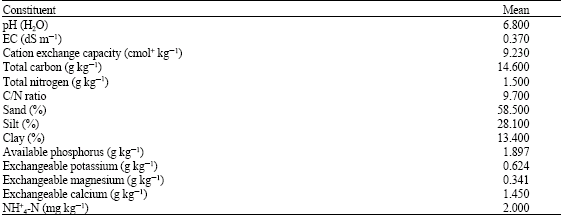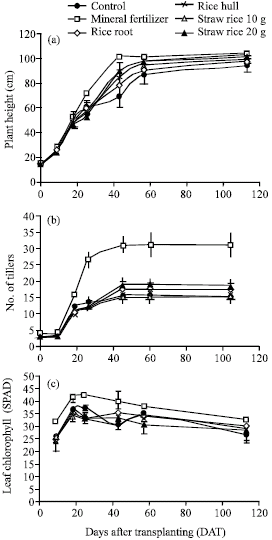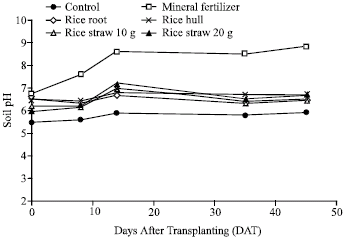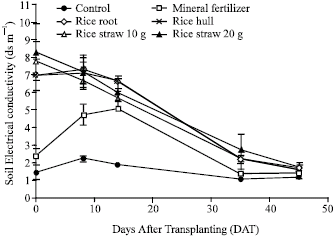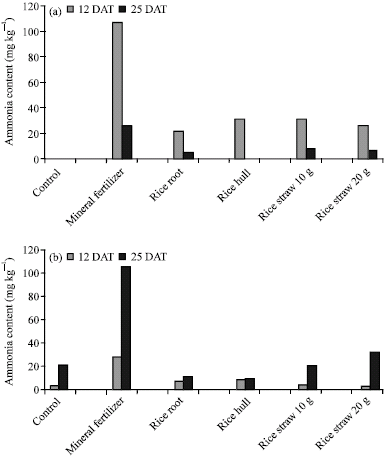Research Article
Impact of Rice Residues Application on Rice Growth, Yield and Some Paddy Soil Properties
University Farm, Faculty of Agriculture, Ehime University 498 Ko, Hattanji, Ehime 799-2424, Japan
Hideto Ueno
University Farm, Faculty of Agriculture, Ehime University 498 Ko, Hattanji, Ehime 799-2424, Japan
Adel Ghoneim
Agricultural Research Center, Field Crops Research Institute, Rice Research and Training Center, 33717 Sakha-Kafr El-Sheikh, Egypt









